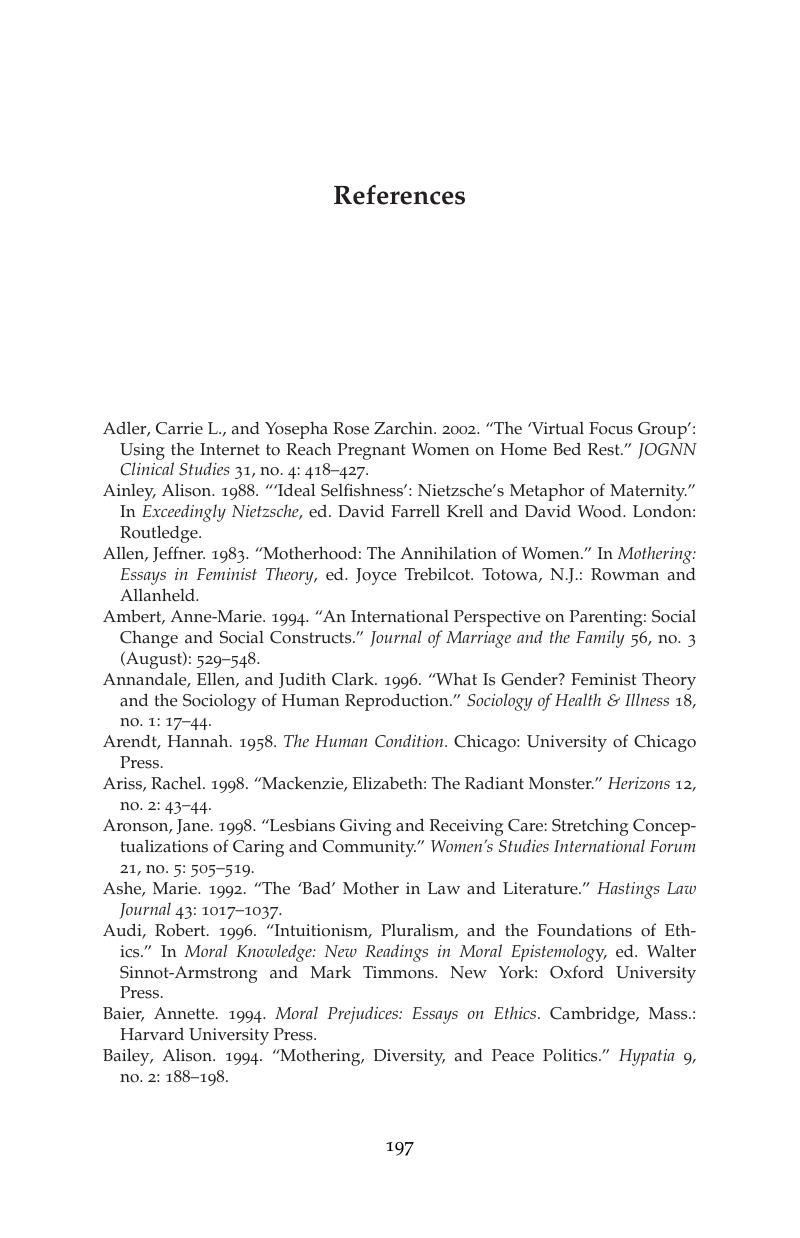References
Published online by Cambridge University Press: 05 June 2012
Summary

- Type
- Chapter
- Information
- Reconceiving Pregnancy and ChildcareEthics, Experience, and Reproductive Labor, pp. 197 - 212Publisher: Cambridge University PressPrint publication year: 2005



